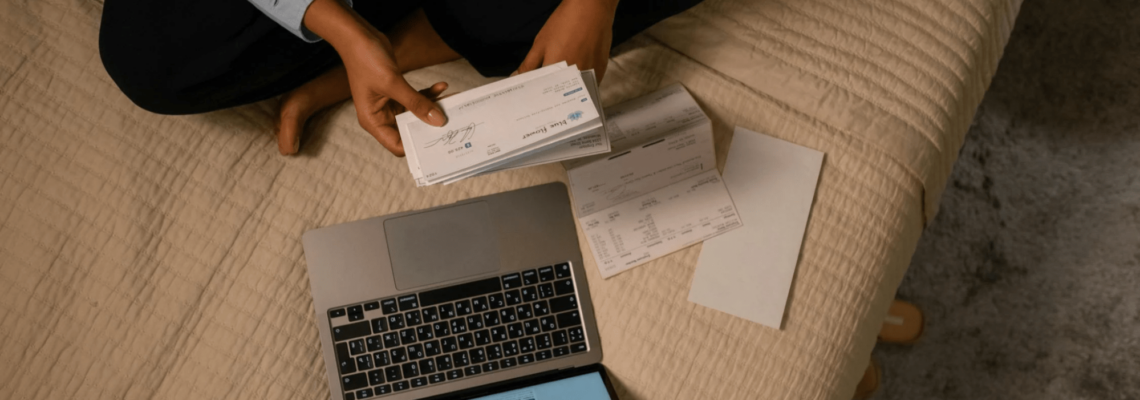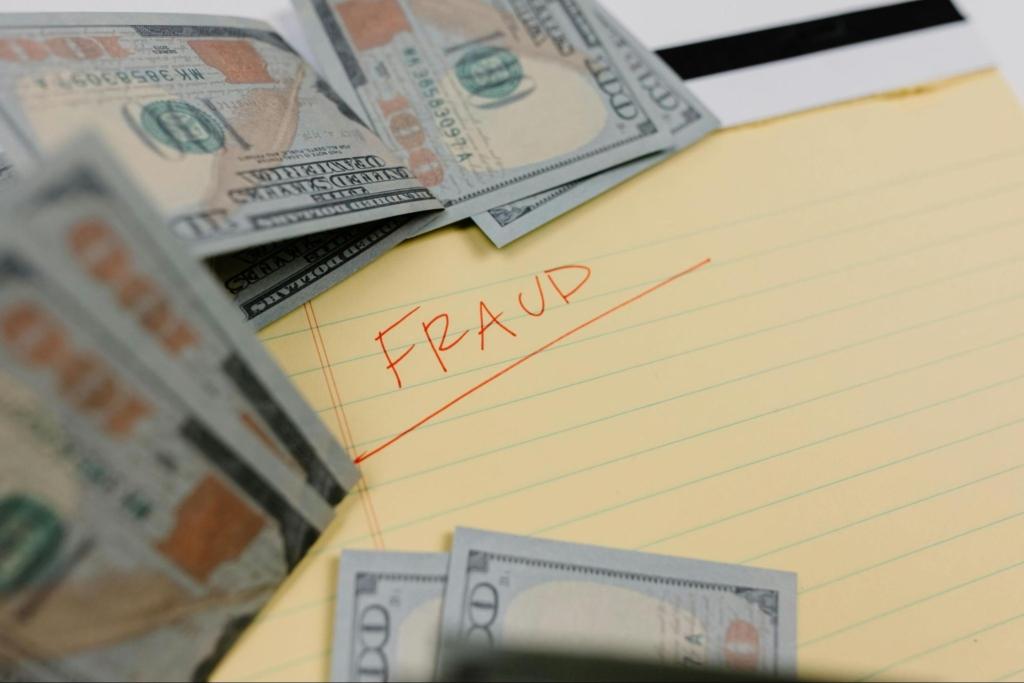
Check fraud continues to be the most prevalent form of payment fraud in 2024. According to the Financial Crimes Enforcement Network, there was a 140% increase in reported check fraud between 2019 and 2022.
If you’ve recently become a target of check fraud, you might be wondering who is responsible if a check is stolen and cashed. This article will answer the question and provide a step-by-step guide on what to do if your checks are stolen.
Who Is Responsible for a Cashed Stolen Check?
If a check is stolen and cashed, the responsibility for the financial loss typically falls on the bank that charged the payor’s account. However, this isn’t always the case.
Here are three ways the situation could go:
- The bank’s responsibility
- The customer’s responsibility
- Recovery from a third-party bank involved in check-handling
The Bank’s Responsibility
In most cases where a stolen check is cashed, the bank that charges the payor’s account is held responsible. According to the Uniform Commercial Code (UCC), the bank has to reimburse the customer if:
- Check was forged
- Check was altered without the customer’s permission
- Check wasn’t authorized by the customer
- Endorsement (signature on the back) was forged or improper
If one or more of these are true, the bank is obligated to re-credit the customer’s account for carrying out an unauthorized transaction.
The Customer’s Responsibility
If the bank can prove that the customer failed to exercise ordinary care, then it bears no liability.
Failure to exercise ordinary care includes:
- Pre-signing blank checks
- Not reviewing bank statements
- Leaving checkbooks unsecured
- Not reporting check fraud on time
- Ignoring suspicious bank account activity
If both you and the bank are proven negligent, the loss may be divided based on each party’s level of responsibility. This means you may get a partial refund for the lost amount.
Recovery From a Third-Party Bank
In some cases, after a bank reimburses a customer for processing an unauthorized transaction, they can try to retrieve the money from the bank that handled the check.
How Do People Cash Stolen Checks?
Scammers involved in check fraud have developed several methods to cash stolen checks. They may:
- Write their own names as recipients on blank checks
- Steal checks from mailboxes, homes, or postal workers
- Sell stolen checks on dark web marketplaces
- Use chemicals to erase the original content and create blank checks
What To Do if Your Check Is Stolen and Cashed

If your check was stolen and cashed, you need to act right away. Here are the steps to take:
- Contact your bank
- Notify the check writer
- File a police report
- Inquire how the check was cashed
- Freeze your credit
- Report fraud to the Federal Trade Commission (FTC)
- Monitor your credit reports
Contact Your Bank
If you notice fraudulent activity, contact your bank immediately. Speak to a check fraud specialist, and if needed, visit the bank with your ID and fraud-related information.
To initiate the investigation, the bank will ask you to fill out an Affidavit of Check Fraud. They’re required to determine whether an error occurred within ten business days.
You should also consider closing your checking account or at least placing a temporary hold on it. This will protect you from further fraud while the bank investigates your case.
Notify the Check Writer
If a check addressed to you is fraudulently cashed, contact the check writer to understand how it fell into the scammer’s hands.
Request to inspect the check and inquire about its delivery method, including postal details. If the scammer’s name rings a bell, inform the bank’s fraud investigators.
This can help the bank’s investigation and increase your chances of being reimbursed for the stolen funds.
File a Police Report
Possessing and cashing a stolen check is a crime. Take your Check Fraud Affidavit to your local police station and file a report for check fraud and identity theft.
Support your application with copies of the check, bank statements reflecting the fraudulent transactions, and any communication with your bank.
Inquire How the Check Was Cashed
If you want to recover your money from the bank, you might have to prove that you’re not at fault for allowing the check to be stolen and cashed.
You can build your case by investigating how and where the forged check was cashed, including how the scammers verified their identity. Request detailed information about the check from your bank’s fraud specialist.
Freeze Your Credit With All Bureaus
Your checks contain valuable personal information that scammers can exploit for identity theft.
To protect yourself against further fraud and credit damage, consider freezing your credit with all three major bureaus—Experian, Equifax, and TransUnion.
Freezing your credit is free and doesn’t impact your credit score, but you’ll need to unfreeze your credit if you apply for a new loan, mortgage, or credit card in the future.
This table provides the phone numbers and online credit freezing forms for the three bureaus:
| Bureau | Webpage for Freezing Credit | Phone Number |
| TransUnion | Online credit freezing | 1-888-909-8872 |
| Experian | Online credit freezing | 1-888-397-3742 |
| Equifax | Online credit freezing | 1-800-685-1111 |
File a Report With the FTC
A report with the FTC serves as evidence of being a victim of identity theft and can be used to report incidents, close fraudulent accounts, or dispute unauthorized transactions.
The FTC also provides a personalized recovery plan with legal advice tailored to your specific situation. Visit the FTC’s identity theft website for detailed steps and guidance based on your circumstances.
Monitor Your Credit Reports
If you don’t want to freeze your credit, protect yourself against future fraud by consistently monitoring your credit report for any unfamiliar new accounts, transactions, or inquiries.
If fraudsters have forged your signature on a check, they may have access to personal information that can be used to commit fraud in the future.
How To Prevent Someone From Stealing a Check and Cashing It
While you can’t do much about your current check, you can take steps to prevent check fraud in the future. To do this, you want to:
- Keep your checkbook in a safe and secure place instead of carrying it with you
- Use a gel pen when filling in checks as gel ink resists check-washing solvents better than regular ballpoint pens
- Never leave outgoing checks in unsecured mailboxes. Deliver them in person whenever possible
- Time your check drop-offs so they’re picked up quickly and not left unattended after the last mail pickup of the day
- Avoid putting your Social Security number on a check and only write your phone number if a merchant known to you requests it
- Regularly update your check registry. It will help you keep track of where and when you sent a check
- Monitor your bank account and statements regularly for signs of fraud and immediately report any suspicious transactions
- Order checks only from reputable sources
- Consider a high-security banking platform like FortKnox by Austin Capital Bank




